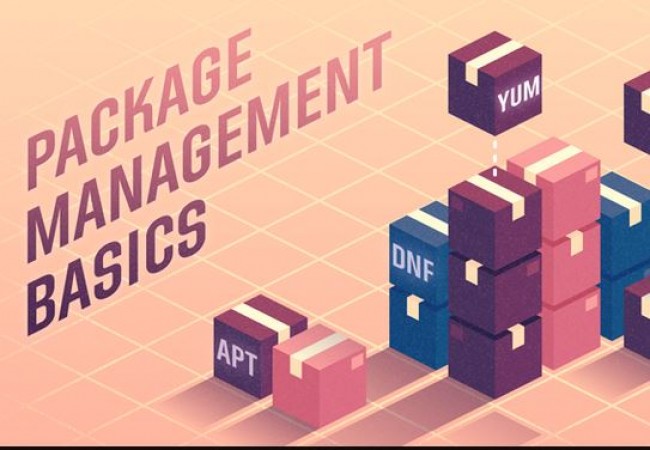
In the world of operating systems, Linux stands out for its robustness, flexibility, and open-source nature. One of the key aspects that make Linux so versatile is its package management system. This article explores the concept of package management, how it enables the seamless installation and updates of software in Linux, and why it is essential for a smooth computing experience.
Package management is a fundamental concept in Linux that allows users to easily install, update, and remove software packages. These packages are collections of pre-compiled code and data, bundled together for easy distribution and installation. Unlike traditional software installation methods in other operating systems, package management in Linux takes care of all the dependencies and conflicts, making it an efficient and reliable way to handle software.
Understanding Package Management
What Are Packages?
In Linux, a package is a compressed archive that contains everything needed to install and run a software application. It includes executable files, configuration files, libraries, and metadata like the software's name, version, and dependencies. The package management system handles these archives, ensuring smooth installation and updates.
Why Package Management Matters
Package management offers several advantages. It simplifies the installation process, as users can install software with a single command. It also allows for easy updates, ensuring that the software is always up-to-date with the latest security patches and bug fixes. Additionally, package management ensures the proper handling of dependencies, avoiding potential software conflicts.
Package Managers in Linux
Linux distributions come with different package managers. Some of the most popular ones are:
APT (Advanced Package Tool)
APT is the package manager used in Debian-based distributions like Ubuntu. It utilizes a set of high-level tools to manage .deb packages and their dependencies.
DNF (Dandified YUM)
DNF is the next-generation package manager used in Fedora and other Red Hat-based distributions. It improves upon the YUM package manager, making dependency resolution faster and more efficient.
Zypper Package Manager
Zypper is the package manager used in openSUSE. It allows users to install, update, and remove packages with ease.
Repositories: The Software Vaults
Linux package managers access software packages through repositories, which are like digital vaults storing various software applications.
Official Repositories
Official repositories are maintained by the Linux distribution's development team. They contain thoroughly tested software packages that integrate seamlessly with the system.
Third-Party Repositories
Third-party repositories are maintained by independent individuals or organizations. While they offer a vast selection of software, users should exercise caution and verify the sources to avoid security risks.
Installing Software Packages
Command-Line Installation
Installing packages via the command line is efficient and straightforward. Users can use package managers like APT, DNF, or Zypper, followed by the package name.
GUI-Based Installation
For users who prefer graphical interfaces, Linux distributions often provide a software center or package manager that allows point-and-click installation.
Updating Software Packages
Command-Line Updates
Keeping software up-to-date is crucial for security and performance. Command-line tools like APT, DNF, and Zypper enable users to update packages quickly.
Automatic Updates
Linux distributions can be configured to automatically update packages, ensuring that the system is always running the latest versions.
Managing Dependencies
Resolving Dependency Issues
Package managers automatically handle dependencies, ensuring that all required software components are installed.
Handling Conflicts
Conflicts between software packages are resolved by the package manager, preventing potential issues in the system.
Removing Software Packages
Command-Line Removal
Removing software is as simple as installing it. Users can use the appropriate package manager to remove packages via the command line.
GUI-Based Removal
Graphical interfaces provide an easy way to remove software, giving users more control over their applications.
Package Management Best Practices
Keeping the System Up-to-date
Regularly updating packages is essential for the security and stability of the Linux system.
Cleaning Package Cache
Cleaning the package cache helps in freeing up disk space and keeping the system tidy.
Customizing Package Management
Pinning Packages
Users can pin specific packages to prevent them from being automatically updated, ensuring stability in critical environments.
Creating Custom Repositories
Organizations can set up custom repositories to distribute in-house software to their systems.
Package Management Security
GPG Key Verification
Package managers use GPG keys to verify the authenticity and integrity of packages, ensuring they come from trusted sources.
Avoiding Untrusted Sources
Users should exercise caution and avoid installing packages from untrusted or unofficial sources to prevent security breaches.
Package Management Across Different Linux Distributions
Different Linux distributions use varying package management systems. Understanding these differences helps users transition between distributions smoothly.
Package Managers Beyond Linux
While package management is closely associated with Linux, other operating systems like FreeBSD and macOS also have their own package management systems.
Future of Package Management
The world of technology is ever-evolving, and package management will continue to adapt and improve to meet future demands.
Package management is a cornerstone of Linux's functionality, providing users with a simple and efficient way to handle software installation, updates, and removal. By utilizing various package managers and repositories, users can enjoy a stable and secure computing experience. Embracing package management's best practices ensures that your Linux system remains up-to-date, secure, and tailored to your specific needs.
ISRO's Chandrayaan-3 Mission Nears Success as Final Orbit-Raising Operation Concludes
PM Modi's Scheduled Visit to Rajasthan and Gujarat This Week
The Malabar UFO Incident: An Enigmatic Sighting of Unidentified Flying Objects